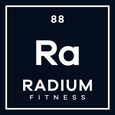
The Road to higher Intensity
High intensity is an important part of training. If you are not pushing for increased intensity, you may not be getting the most out of your work outs.
Pay attention your next couple weeks of work outs.
Do you have a day where you train to 100% effort? Or, are you pushing to 100% and then burning out every single work out?
If you answer yes to either of these, it might be time to re-evaluate how you complete your work outs.
What does full, high intensity training feel like?
As an athlete, coach, and a nurse, I understand that pain perception and tolerance mean different things to different people. Every one perceives pain differently and can tolerate different levels of pain. That being said, feeling the pain or deep burn at least once a week is one important part to training. If you are uncomfortable with feeling uncomfortable, this should be a little bit of a wake-up call. Sometimes life hurts, and sometimes your work outs are supposed to as well!
By pushing the intensity, not only are you gaining physical benefits, but training to full capacity can also increase your work out mental game, confidence, and prepare you for competition and everyday life. It is also proven to be the only way to increase athletic performance in already well trained endurance athletes.
Disclaimer: Every single day should NOT be a max effort or 100% intensity. This can often lead to burn out and injury. The key is to listen to your body and balance your high intensity days with general conditioning and strength training. Also, form always trumps intensity. Make sure your form is solid before you increase intensity. Always clarify with your coach what the intended intensity for each work out is and make sure you have safe technique.
Short Work Outs:
When the work out is short (2-8 minutes) or indicates a max effort movement, that means full intensity and speed! Go as hard as you can for as long as you possibly can. You may burn out near the end, but sometimes that is OK! It is going to hurt, but that is OK too!
Moderate Work Time:
For moderate length workouts (9-17 minutes) the pace should be up, but not a max effort the entire time. My suggestion is to begin at a steady pace (70%), then begin to increase your pace after the second half of the work out.
Being able to sustain at an 80-85% pace for an extended period of time is a different type of pain. It requires mental and physical strength and is also a great way to improve your overall training.
Longer Work Out Time:
When working for 18-30+ minutes, you obviously cannot go as fast as possible can the entire time. These work outs are often designed for pacing and consistent movement. They are not intended for you to burn out half way through. However, this still means full effort (60-70%) and mental engagement for the time allotted. Get comfortable with being a little uncomfortable for longer periods of time.
Main Takeaway about High Intensity Training
Some work outs are supposed to very uncomfortable or painful. But not EVERY work out should leave you rolling around on the ground. When programmed well, they will help your overall fitness goals.
Remember that a little suffering from time to time will make you stronger!
